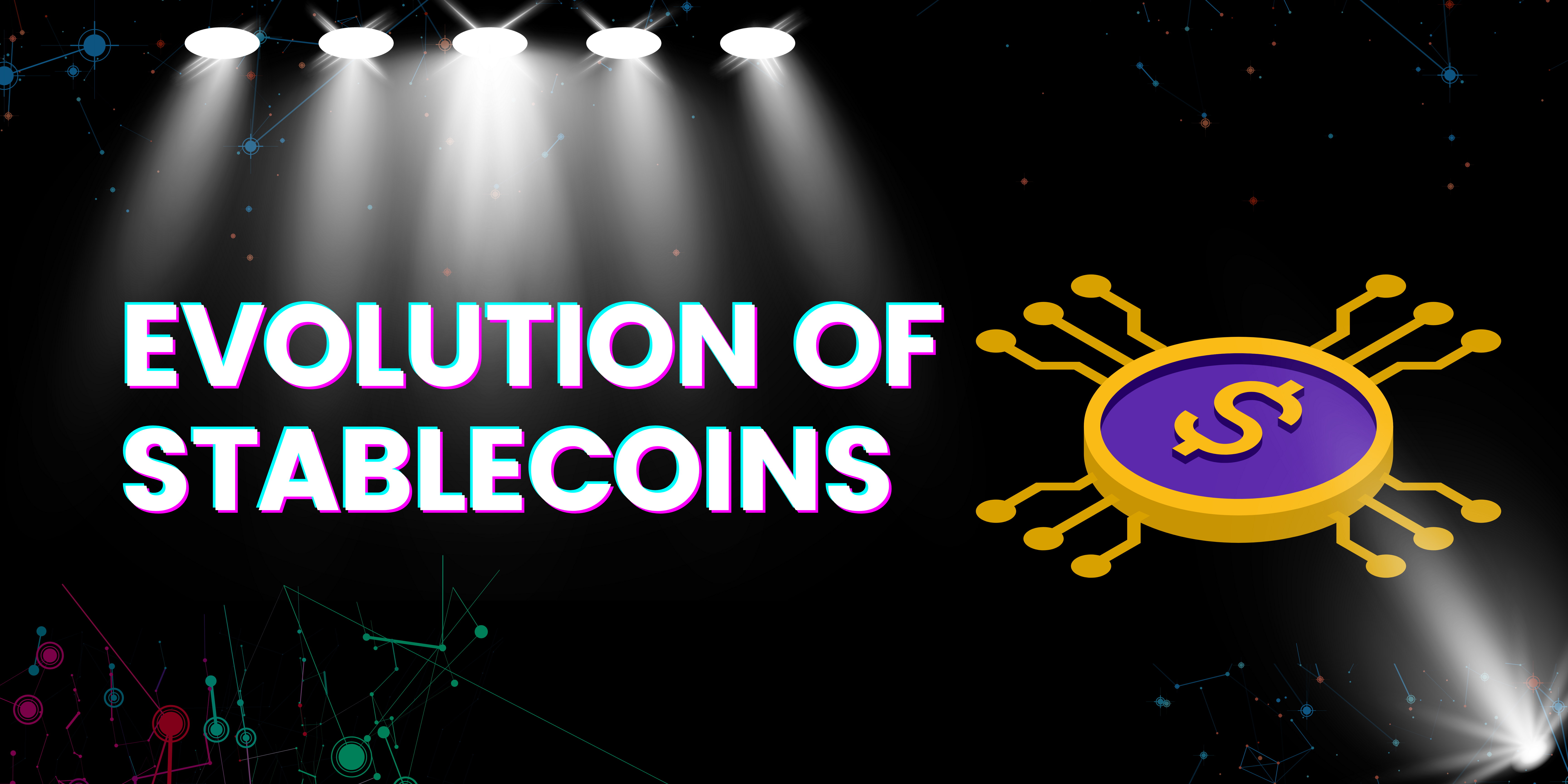Stablecoins have evolved significantly since their inception, with the concept dating back to the early 2010s. These digital assets were created to address the extreme price volatility of cryptocurrencies like Bitcoin and provide a stable medium of exchange for the blockchain ecosystem. Here’s a brief overview of the evolution of stablecoins:
- First Generation: Centralized and Asset-Backed Stablecoins
- The earliest stablecoins, such as Tether (USDT), emerged around 2014. They were often backed by traditional fiat currencies like the US dollar or other assets like gold or commodities.
- These stablecoins relied on centralized entities to hold reserves and issue tokens, which raised concerns about transparency and trust.
- Second Generation: Algorithmic Stablecoins
- Algorithmic stablecoins like MakerDAO’s DAI began to gain popularity around 2017. These stablecoins use smart contracts and algorithms to maintain their stability.
- DAI, for example, is created through collateralization with other cryptocurrencies and smart contracts that automatically adjust the supply to keep its value close to $1.
- Third Generation: Hybrid Stablecoins
- Hybrid stablecoins combine elements of both centralized and decentralized models. They aim to balance stability, decentralization, and scalability.
- Projects like Terra and Reserve use a combination of algorithmic mechanisms and collateral reserves to maintain stability.
- Regulatory Developments
- Stablecoins, especially those backed by fiat currencies, have faced regulatory scrutiny. Governments and financial institutions have expressed concerns about issues like money laundering, financial stability, and consumer protection.
- Some projects have sought to comply with regulatory standards, while others have explored more decentralized models to mitigate regulatory risks.
- Expanding Use Cases
- Stablecoins have gone beyond their original use as a medium of exchange. They are now used in decentralized finance (DeFi) protocols, providing liquidity, collateral, and yield opportunities.
- Stablecoins are also used for remittances, cross-border payments, and as a safe haven during cryptocurrency market volatility.
- Interoperability and Cross-Chain Stablecoins
- Efforts have been made to create stablecoins that can operate on multiple blockchains and facilitate interoperability. Projects like Wrapped Bitcoin (WBTC) enable Bitcoin to be used on the Ethereum network.
- Cross-chain stablecoins, such as Thorchain’s Binance-Pegged Assets (BEPs), allow stable assets to move across different blockchain ecosystems.
- Decentralized Finance (DeFi)
- DeFi has been a major driver of stablecoin adoption, with various stablecoins serving as the backbone of lending, borrowing, and liquidity provision within these protocols.
- This has also led to the growth of yield farming, liquidity mining, and other financial opportunities within the DeFi space.
- Innovation and Competition
- The stablecoin space continues to innovate, with new projects and technologies emerging. These include algorithmic stablecoins, decentralized governance models, and unique collateral options.
- Competition is fierce, and market leaders like USDC, USDT, and DAI face challenges from new entrants seeking to offer improved features and security.
The evolution of stablecoins reflects the broader evolution of the blockchain and cryptocurrency ecosystem. As regulatory and technological landscapes continue to evolve, the future of stablecoins remains dynamic and uncertain, but they are likely to play a crucial role in the cryptocurrency space for years to come.




